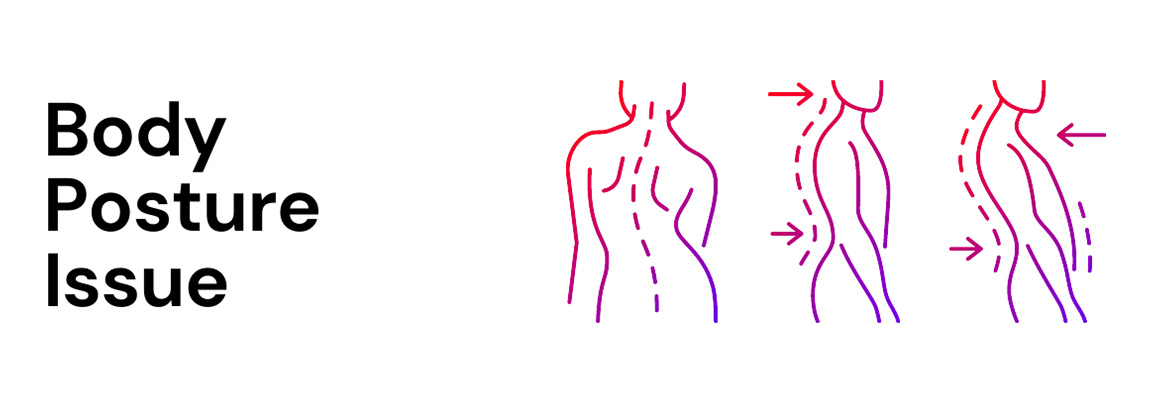
16 Jun, 2023 Back Pain, Shoulder Pain, and Muscle Stress: The Culprits of Bad Posture
Maintaining a good posture is crucial for overall well-being, yet many people unknowingly subject themselves to prolonged periods of bad posture. This unfortunate habit can lead to a myriad of issues, including back pain, shoulder pain, and muscle stress.
Causes of Bad Posture
- Sedentary Lifestyle: Spending excessive time sitting, whether at a desk or in front of a screen, contributes to poor posture. Slouching and hunching forward strain the muscles and ligaments supporting the spine, leading to discomfort.
- Incorrect Ergonomics: Poorly designed workstations, improper chair height, and inadequate computer screen positioning can all contribute to bad posture. These factors place undue stress on the back, neck, and shoulders.
- Lack of Exercise and Weak Core Muscles: A weak core and lack of physical activity weaken the muscles necessary for maintaining good posture. Without adequate strength and flexibility, it becomes challenging to hold the body in proper alignment.
Consequences of Bad Posture
- Back Pain: Poor posture places extra pressure on the spinal discs, leading to chronic back pain. Muscular imbalances caused by bad posture can also result in strain, spasms, and stiffness.
- Shoulder Pain: Rounded shoulders, often caused by slouching, can strain the muscles and tendons in the shoulders. This can lead to shoulder pain, limited range of motion, and even conditions like rotator cuff injuries.
- Muscle Stress and Fatigue: Maintaining an unnatural posture for extended periods causes muscles to work harder than necessary, leading to fatigue and muscle tension. This can result in discomfort and reduced productivity.
Alleviating and Preventing Bad Posture
- Ergonomic Setup: Ensure your workstation is set up correctly, with an adjustable chair, proper desk height, and an ergonomic keyboard and mouse. Position your computer screen at eye level to reduce strain on your neck.
- Take Regular Breaks: Stand up and stretch every 45 minutes to relieve muscle tension and promote blood circulation. Consider incorporating exercises that strengthen your core and improve posture, such as yoga or Pilates.
- Practice Mindful Posture: Be aware of your posture throughout the day. Sit and stand tall with your shoulders back, and engage your core muscles. Consider using posture –correcting aids or reminders, such as a lumbar roll or posture brace.
Bad posture is a common yet avoidable problem that can lead to various health issues, including back pain, shoulder pain, and muscle stress. By understanding the causes and consequences of poor posture and implementing simple lifestyle adjustments, we can alleviate discomfort and promote a healthier, more upright posture. Prioritize your posture today to enjoy a pain-free and active lifestyle tomorrow.
Share this post with your friends:
